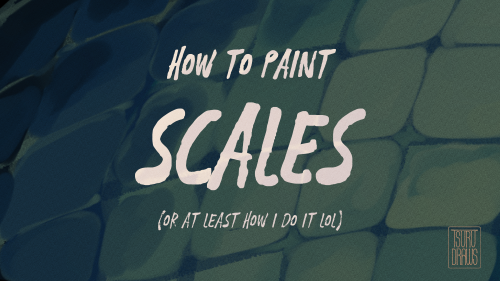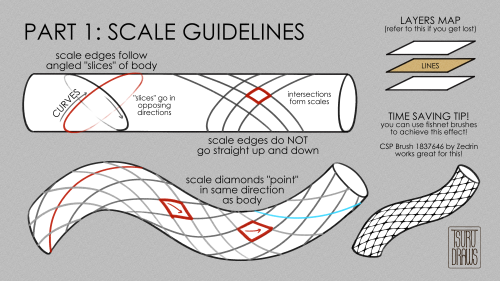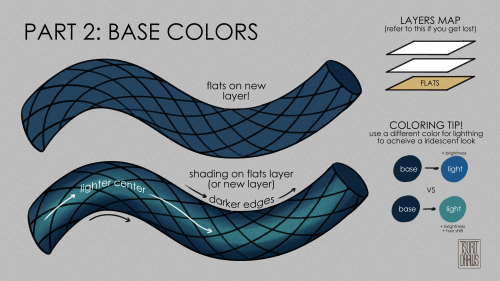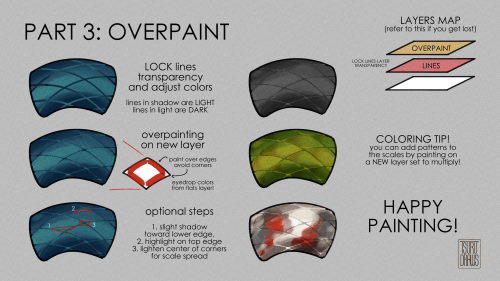Ea, Our Second Chance (10b)
Ea, Our Second Chance (10b)
10b. Eucytobionta (part 2/3, unicellular diversity)
(Index) (< 10a. Eucytobionta, cell structure) (> 10c. Eucytobionta, biotechnology)

(original link)
« The diversity of microscopic life was, and still is, overwhelming: from day one, each drop of water and grain of sand revealed a bewildering variety of forms. No more than on Earth, of course; don’t think for one moment that we fully understood the complexity of our mother world when we left it. We’re still making new discoveries from the few experimental models we brought over. Nevertheless, this represented the perfect opportunity to test out the new kind of science we were going to build. » – dean Sofia Torres, Tabula Rasa
I. Kingdom Monokarya (etym. “one kernel”). Unicellular, never colonial. Usually very small (<20 μm); only protonucleus (almost certainly secondary loss of paranuclei; polynucleate kingdoms do not form a clade). Usually flagellate, at least at one stage. Mostly endoparasites, within fluids of multicellular organisms (lymph, hydromuscular liquid); a few intracellular species. Outside of hosts they form capsules highly resistant to dehydration, heat, and radiations. Representative genera: Ankylococcus, Myoecia, Nesokaryon.
II. Kingdom Pogonocyta (etym. “bearded cell”). Unicellular, frequently colonial. Usually have superficial cilia or flagella. Often have two protonuclei, which they exchange in a form of sexuality not synchronous with reproduction (which occurs by fission or sequential fragmentation). Often very large species (commonly >0.1 mm with >20 paranuclei, Titanopogon reaches 8 mm in length); may have structures such as ciliate wheels, funnels, traps, stylets, articulated “jaws”, etc. to feed on smaller cells, as well as visual organs and permanent digestive vesicles. Eyespots may have developed from endo-symbiotic unicellular algae. Smaller species may form clonal colonies via incomplete fragmentation, e.g. Petrovella. A few aerial species are known (most within genus Uranocyton). Representative genera: Hekatokaryon, Hylonectes, Nanognathus, Petrovella.
III. Kingdom Ostracophyta (etym. “tile-plant”). Unicellular, rarely colonial. Rigid polyhedral shell, apparently formed by crystalline sulfonamide impregnating the cell net; pseudopodia emerge from gaps, usually regularly placed, sometimes at the vertices of the shell. Macroscopic needleweed (“Hyalophyta”, e.g. Arslanophyton). In the colonial forms (e.g. Endolithus), the shells may fuse and trap sediment forming stromatolite-like structures, pseudopodia may connect cell bodies. Usually phototrophs or mixotrophs (= energy from both sunlight and organic matter). All major forms of frostblight (white, purple, mealy, etc.) are ectoparasitic Ostracophyta with invasive root-like pseudopodia, but do not form a single clade. Representative genera: Arslanophyton, Astrapocyton, Endolithus, Phytopachne.
IV. Kingdom Colloplasmi (etym. “glue-form”). Unicellular, almost (?) exclusively colonial. Lobate cells, able to move by circulating cytosol through the lobes. Adhesive cell envelope, apparently rich in glycosyl-sulfonamides, which may form a common matrix for colonies. Sometimes mineral particles are incorporated (origin of Lithobionta?); mushroom-like, coral-like, or grass-like colonies both in water and on land, with specialized fruiting bodies. Often the colonies liquefy or “evaporate” when disturbed or damaged (special toxic cell morph in Ceratoides). Saprotrophs, herbivores, carnivores; unconfirmed case of a Cordyceps-like neural parasite. Representative genera: Ceratoides, Danaë, Eidocarpus, Xanthoplasma.
V. Kingdom Lithobionta (etym. “stone-life”). Multicellular. Forming pumice-like porous mineral structures; “living boulders”. Representative genera: Lithobius, Pliniella.
VI. Kingdom Haematophyta* (etym. “blood-plants”). Multicellular. Photosynthetic organisms with zinc-based pigments; “red plants”. Representative genera: Corynetes, Hypogaea, Tomophylla, Tribaculum.
VII. Kingdom Fuscophyta (etym. “dark plants”). Multicellular. Photosynthetic organisms, methanogens; “black plants”. Representative genera: Cystophyton, Dendrocystis, Nepheloecia.
VIII. Kingdom Enantiozoa (etym. “mirror-animals”). Multicellular. Mostly motile chemoheterotrophs; Ean “animals”. Representative genera: Akkadia, Dendrocephalus, Prosopogyrus, Semaphorus.
* Named “Erythrophyta” in other publications. The two names are to be considered synonymous, when defined as “the most exclusive clade including both Maurophytum purpureum and Corynetes corynetes”.
– Vikram Jariwala et al., “Preliminary notes on Ean "eukaryote” diversity", Xenobiology Review, 14 (38 AL)
More Posts from Skeletondanc3r and Others
The shinies in this game are mostly done by algorithms so that there isn't a sprite overload; this makes them look different. Fusions can be shiny in three different ways depending on what shiny Pokemon makes them up. (Buneary shiny with normal driftloon/normal buneary with shiny driftloon/both pokemon shiny)

I DIDN’T THINK YOU COULD GET SHINIES IN THIS GAME??????





Show him the fruits
alive and current maris



I hope so. I've blocked them so I can't really be sure myself, and the fact that the only thing I ever see still is them asking other people about that episode is a little concerning.
Especially since the episode has non-con elements
I saw you told me about wanderfan2000 being a fetish miner?is there like proof of this or
sigh

Hey buddy. That like button is red. Care to explain..?

DIE!!!!






Interwoven
Like a giant pink warship, the Rosy Frigate punctuates the endless sea of tendrils. It hosts a crew of disk-shaped ravenous eating-machines called orbics. It is the orbics’ duty to keep the creeping tendrils from strangling and overtaking their home. Fading daylight signals their departure from the safe cluster beneath their giant companion to begin the night’s work of clearing new growth in the near vicinity. Each orbic can consume half its body weight in tube-carpet flesh every night, ensuring they will always have a place to return to at dawn. A Dwarf Blue Cortina observes the melee in confusion. Anything larger than an orbic will send it leaping away for cover, as its curiosity is matched only by its caution. The stoic quartet of Reponos standing solemnly in the background is incapable of seeing or hearing the events taking place nearby. Their role in this ecosystem turns out to be rather bizarre…




getting back into painting my dragon bois more so a lil tutorial for how i paint scales!
(Haven't played the full game yet, still haven't gotten to sky islands so please don't spoil the game.)
So I decided to go back to Moon after I got the ability to understand speech, and I don't know how to get back to The Wall from here.
Is there a way to climb back up the wall from the starting area if I go back through the citadel or do I have to go back to 5 pebbles? I don't wanna go back there man, I'm pretty sure he'll kick my ass if he sees me again-
Asriel Redraw
I decided to go ahead and redraw a digital drawing of Asriel that I made back in 2020!

Old Drawing:

I'm actually quite surprised I've improved so much in just three years. I always used to be proud of that old drawing, but now I'm super proud of the new one!
Have confidence in your art! 🌼




m-my babies fucking creatura, the sad goo , child and the prettiest knight
-
 peptobismolultra liked this · 1 year ago
peptobismolultra liked this · 1 year ago -
 cloud-berry liked this · 1 year ago
cloud-berry liked this · 1 year ago -
 0ctogus liked this · 1 year ago
0ctogus liked this · 1 year ago -
 crazytac liked this · 2 years ago
crazytac liked this · 2 years ago -
 minibinibilly liked this · 2 years ago
minibinibilly liked this · 2 years ago -
 wtrotsky-blog liked this · 2 years ago
wtrotsky-blog liked this · 2 years ago -
 aliendetritus liked this · 2 years ago
aliendetritus liked this · 2 years ago -
 bluntfiend161 liked this · 2 years ago
bluntfiend161 liked this · 2 years ago -
 salmonofwisdom liked this · 2 years ago
salmonofwisdom liked this · 2 years ago -
 eguzkilorefromspace liked this · 2 years ago
eguzkilorefromspace liked this · 2 years ago -
 skeletondanc3r reblogged this · 2 years ago
skeletondanc3r reblogged this · 2 years ago -
 skeletondanc3r liked this · 2 years ago
skeletondanc3r liked this · 2 years ago -
 blufangfierrio liked this · 2 years ago
blufangfierrio liked this · 2 years ago -
 the-archivist-raven liked this · 2 years ago
the-archivist-raven liked this · 2 years ago -
 toledocrypto liked this · 2 years ago
toledocrypto liked this · 2 years ago -
 thatonegaycactus liked this · 2 years ago
thatonegaycactus liked this · 2 years ago -
 justasipofambrosioa liked this · 2 years ago
justasipofambrosioa liked this · 2 years ago -
 bionic-the-weird-one liked this · 2 years ago
bionic-the-weird-one liked this · 2 years ago -
 thespamman24 liked this · 2 years ago
thespamman24 liked this · 2 years ago -
 joshurequiem liked this · 2 years ago
joshurequiem liked this · 2 years ago -
 oceanblue971 liked this · 2 years ago
oceanblue971 liked this · 2 years ago -
 aimlessramblings-blog liked this · 2 years ago
aimlessramblings-blog liked this · 2 years ago -
 thatforestprince liked this · 2 years ago
thatforestprince liked this · 2 years ago -
 the-world-annealing liked this · 2 years ago
the-world-annealing liked this · 2 years ago -
 potchatok liked this · 2 years ago
potchatok liked this · 2 years ago -
 dr-0-shadow reblogged this · 2 years ago
dr-0-shadow reblogged this · 2 years ago -
 dr-0-shadow liked this · 2 years ago
dr-0-shadow liked this · 2 years ago -
 monster-creator-12 reblogged this · 2 years ago
monster-creator-12 reblogged this · 2 years ago -
 monster-creator-12 liked this · 2 years ago
monster-creator-12 liked this · 2 years ago -
 squishymadeathing liked this · 2 years ago
squishymadeathing liked this · 2 years ago -
 wanhedacomart reblogged this · 2 years ago
wanhedacomart reblogged this · 2 years ago -
 silelda liked this · 2 years ago
silelda liked this · 2 years ago -
 kaylee615 liked this · 2 years ago
kaylee615 liked this · 2 years ago -
 spyglassrealms liked this · 2 years ago
spyglassrealms liked this · 2 years ago -
 alpha-khimera liked this · 2 years ago
alpha-khimera liked this · 2 years ago -
 speculative-world liked this · 2 years ago
speculative-world liked this · 2 years ago -
 spiffyspidr liked this · 2 years ago
spiffyspidr liked this · 2 years ago -
 elliotbizarre liked this · 2 years ago
elliotbizarre liked this · 2 years ago -
 aurumdrake liked this · 2 years ago
aurumdrake liked this · 2 years ago -
 irockthereforiam-blog liked this · 2 years ago
irockthereforiam-blog liked this · 2 years ago -
 stainlesssteellocust reblogged this · 2 years ago
stainlesssteellocust reblogged this · 2 years ago -
 stainlesssteellocust liked this · 2 years ago
stainlesssteellocust liked this · 2 years ago -
 red-red-spout reblogged this · 2 years ago
red-red-spout reblogged this · 2 years ago -
 o-craven-canto reblogged this · 2 years ago
o-craven-canto reblogged this · 2 years ago
